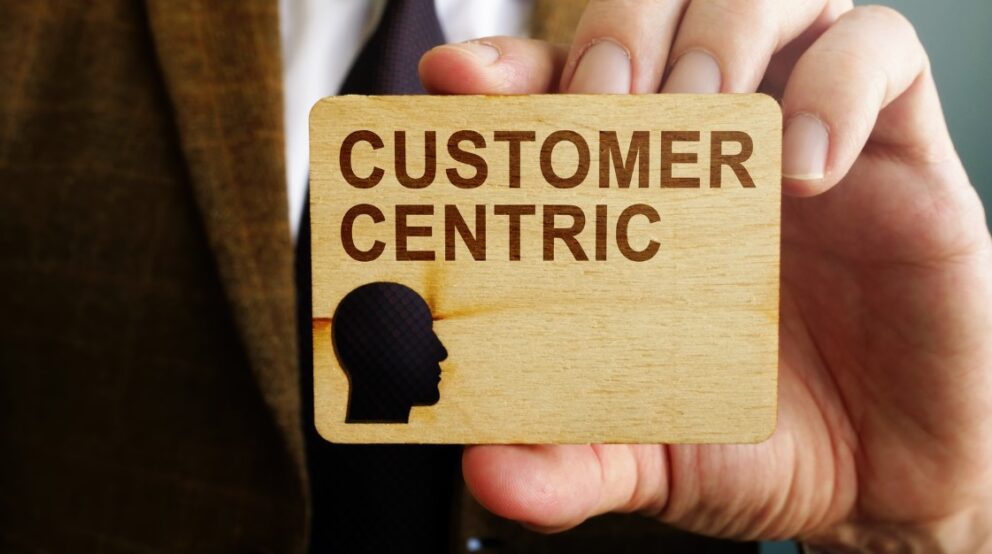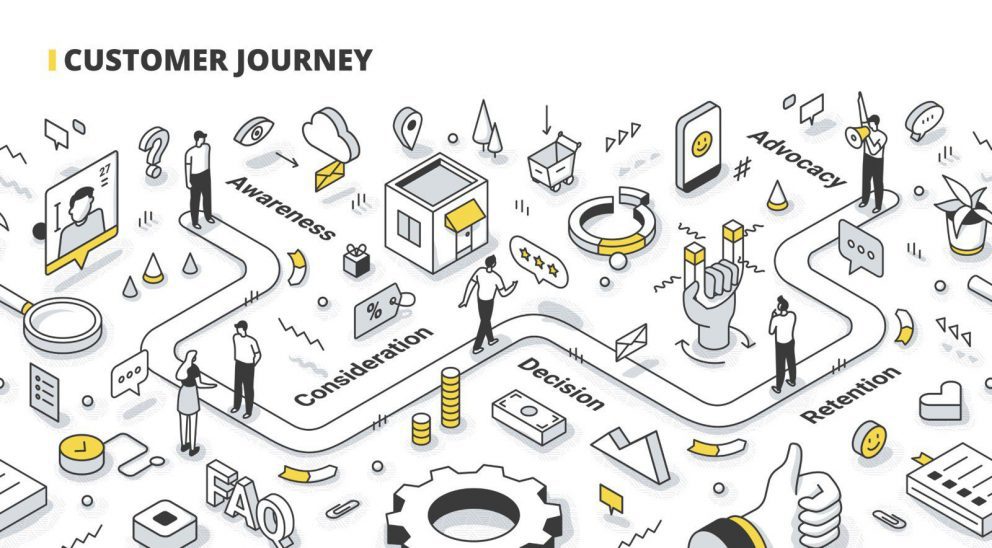Taking Your Customer Experience Strategy To The Next Level

By Carly Bauer, Marketing Coordinator at Heinz Marketing
Last month I wrote a post about the importance of creating good customer experience within your company. It covered what customer experience is, what separates a good customer experience from a bad one, why it is so important, and why it matters in the first place. I highly recommend checking out my previous post before diving into learning how to enhance customer experience within your company in order to have a good foundational understanding of what customer experience is and why it is so important to be aware of how your customers interact with your business. If you don’t have time, here is a quick overview.
Customer experience (CX) is everything related to a business that affects a customer’s perception and opinion about it. This includes all the interactions a customer has with an organization for the lifetime of that relationship with that company or brand. When you, as a business, can provide good customer experience, customers feel valued, listened to, and supported throughout their purchasing process and use of the product.
When customer experience is not done properly, it can create negative impacts that have long lasting effects and can be hard to recover from. These poor customer experiences can result from not understanding customer needs, long wait times, lack of personalization, accessibility issues, unresolved issues or questions, the list goes on.
So, this leads us to why customer experience is so important. Today, the market is full of products that perform similar functions. Customers have numerous options to choose from at their fingertips plus the resources necessary to educate themselves and make purchases on their own. The critical factor that is going to set you apart from the competition is customer experience. A good customer experience can help drive competitive advantage, promote loyalty, help retain customers, and encourage brand advocacy. A remarkable experience is going to make you stand out amongst the endless other options and will help customers decide who they want to do future business with.
Now that we have that covered, let’s dive into how you can enhance your customer experience and make it better than it already is, because that’s what this post is really all about. Here are some ways to take your customer experience to the next level.
Create feedback loops
Customer feedback is a great way to identify what customer expectations are and how they change over time. It is also a great way to figure out what is working and what is not, where problems lie and the best ways to address them. When receiving feedback, the key is to acknowledge it and do your best to act on it. It’s important to create a feedback loop with customers in order to build trust and ensure that their opinions matter.
Surveys provide a good channel for feedback and can help establish communication loops to acknowledge issues and make customer concerns feel valued. Including open-text feedback in surveys can help you better understand the thoughts and sentiments behind customer actions and thoughts–Giving you the ability to make more informed CX decisions as a result.
Improve your customer service
It is important to start off with defining the difference between customer experience and customer service. Customer service is a single factor in the customer journey, whereas customer experience is the entire course of interactions a customer has with a brand. Good customer service is vital for your company’s overall customer experience. A part of the buying decision process is customers knowing they’ll get the support they need when they need it. Customers who experience great service buy more and stay loyal to brands longer. In order to deliver great customer service there needs to be a few things in place first.
When employees are hired, they should be trained, coached, and supported with a view to growing customer service skills and behaviors. Next, your business culture should hold a high importance on delivering quality, not just speed and efficiency. Finally, the infrastructure your business runs on, including CRM tools and experience management platforms, need to be flexible, scalable, and easy to use. Once these items are in place, you can build on improving your customer service by:
- Optimizing wait and response times by creating a strategy that involves combining digital and in-person support to effectively combat issues appropriately
- Use benchmark metrics to make sure you are continually improving
- Offer multiple channels for support as part of your omnichannel approach – which we will dive into more coming up
- Close the loop with customers – turn every experience into a positive outcome, finishing on a good note
Build an omnichannel experience
Omnichannels aren’t just about meeting customers where they are, it’s going a step further and providing consistent communications throughout their buying journey that travels with them from channel to channel. With an increasing amount of web traffic coming from mobile devices nowadays instead of desktops, multi-device digital journeys are now the standard. This involves having and keeping up to date context on who your customer is, what content they’ve opened, what items are sitting in their shopping cart, and past conversations. All this information is crucial for delivering a good experience across different channels—both online and offline.
Deliver personalization
Customers today want personalized interactions, something that creates a unique experience and addresses their specific needs. Having an experience that adapts based on what you know about the customer makes customer journeys smoother and strengthens the relationship between brand and customer.
One form of tailored customer content is a personalized email filled with recommendations and vouchers based on the customer’s purchase history, content they have opened and items still sitting in their cart.
Here are some other ways you can incorporate personalization into the customer journey:
- Offer recommendations based on past purchases
- Use location technology to personalize based on their location
- Personally follow-up with survey responses, issues, problem solutions, and overall product/service satisfaction
- Use data to personalize survey questions
Create powerful experiences through AI
AI and machine learning are tailor-made for CX experiences. From chatbots that are there for customers 24/7 and virtual customer assistants that can help with quick, repetitive tasks, AI integration is a growing technology and is quickly emerging as machine-learning applications, chatbots, and mobile messaging.
The value of AI can be seen in the increasing number of big businesses incorporating it into their CX strategy. For example, Delta Airlines allows customers to reschedule and modify flights through their chatbot service without needing to get on the phone and sit on hold with an actual service rep. Domino’s also has a chatbot feature that allows customers to place orders through Domino’s Facebook Messenger. It is important to note that when AI tools reach their limit to provide capable customer support, humans need to be there and available to help their customers and provide the necessary human touch.
Adopt a top-down approach
CX and company leaders should model the importance of customer-centricity and set the standard employees should follow. By starting from the top, values and behaviors should be consistently adopted and acted on at every level within the organization, from C-suite to the sales team and any other customer facing employees.
Don’t forget to empower your employees too
There’s an important connection between empowered employees and happy customers. Take this situation into consideration – you are a customer, speaking with a customer service rep who is trying to apply a discount for you but they need approval from their manager. It would be much easier, more convenient, and quicker if the service rep could use their judgement, approve the discount and solve your issue on the spot. Opportunities for empowerment don’t necessarily have to be like this example but in order to build it, find out what is blocking your employees from delivering phenomenal customer experience. You could use a form of employee survey to uncover common pain points in the employee experience and use those insights to evaluate systematic processes that are creating poor work flow.
Also consider your company culture. Are managers, leaders, and employees on the same page? Do they clearly understand the goals and values that support providing a good customer experience? Happy and supported employees provide happy and supportive experiences to their customers.
If you want to dive deeper into how employee experience connects and affects customer experience, check out Why CX Fails Without a Solid EX Strategy.






